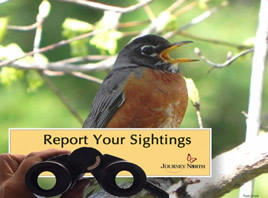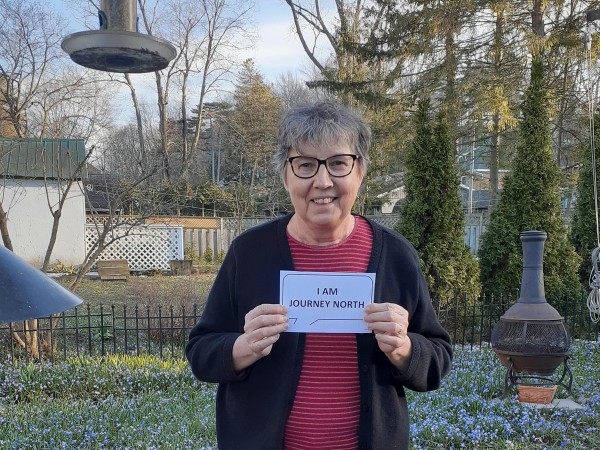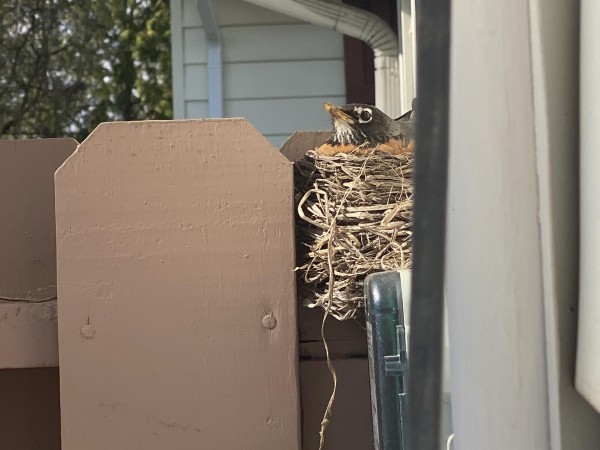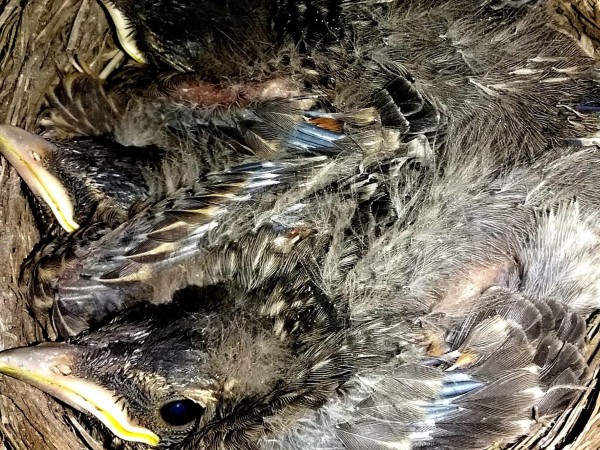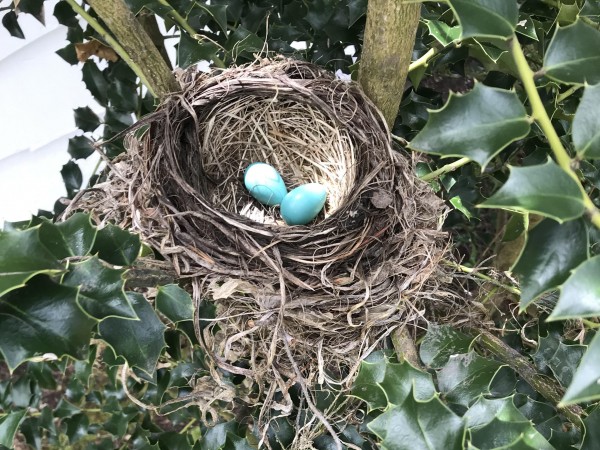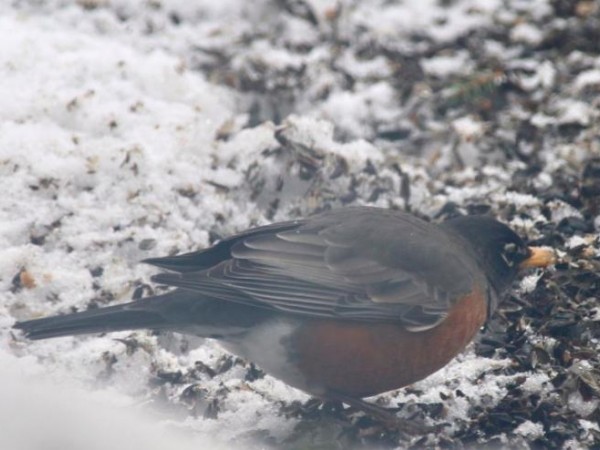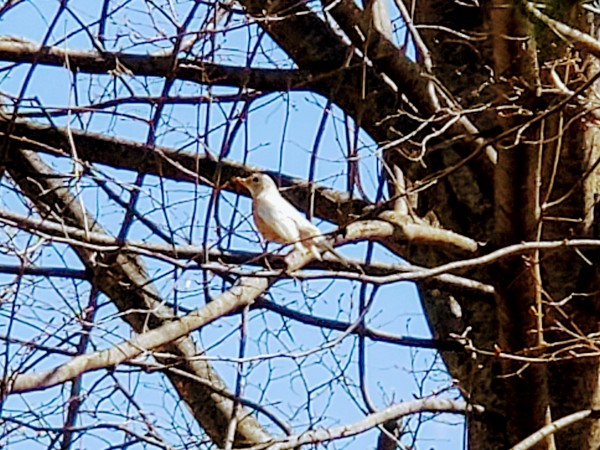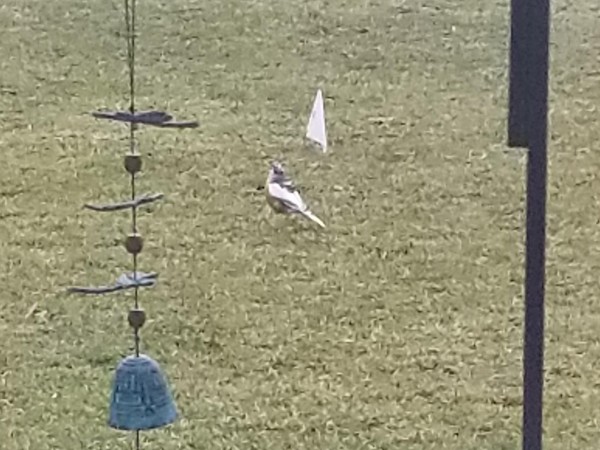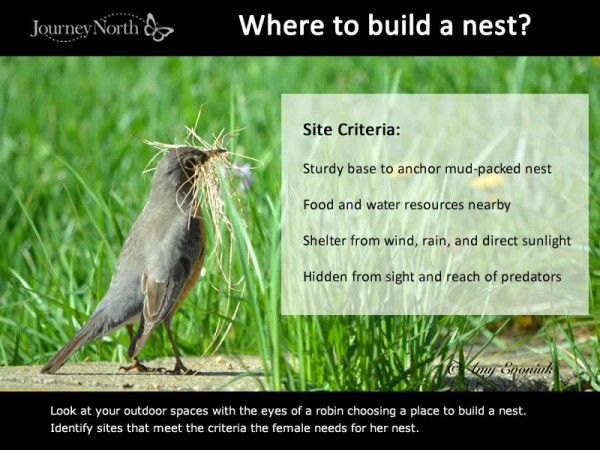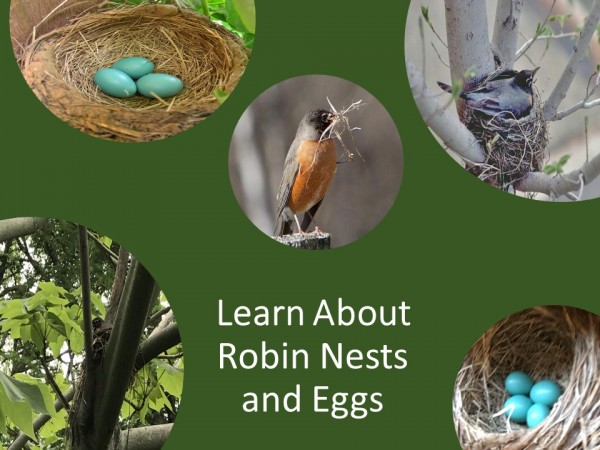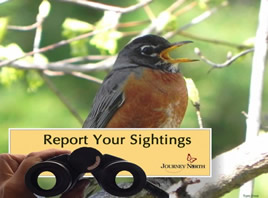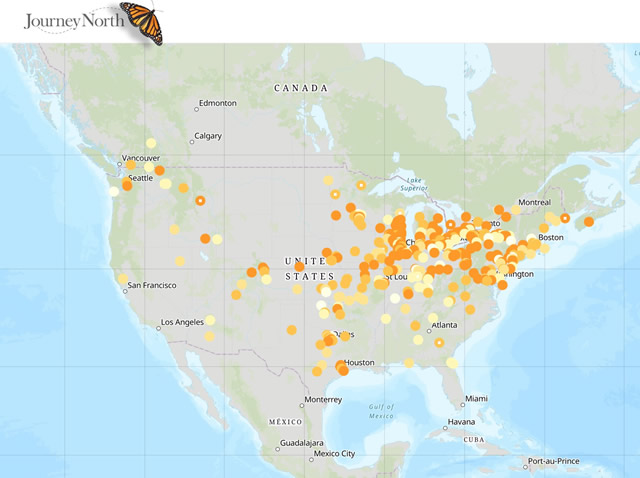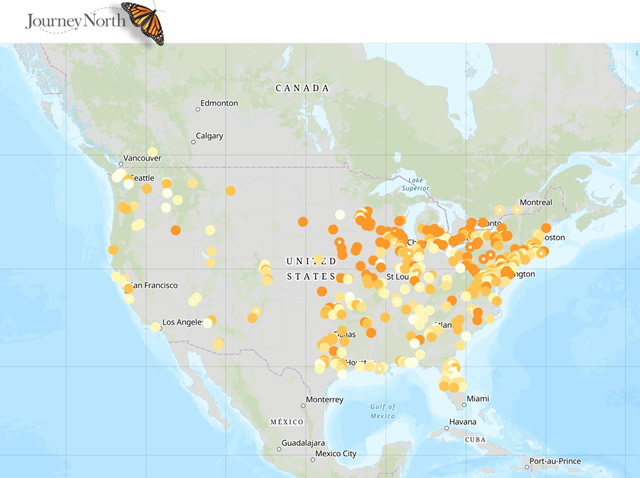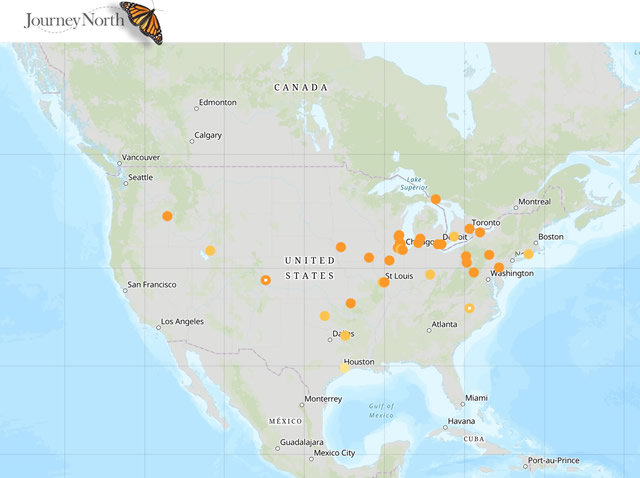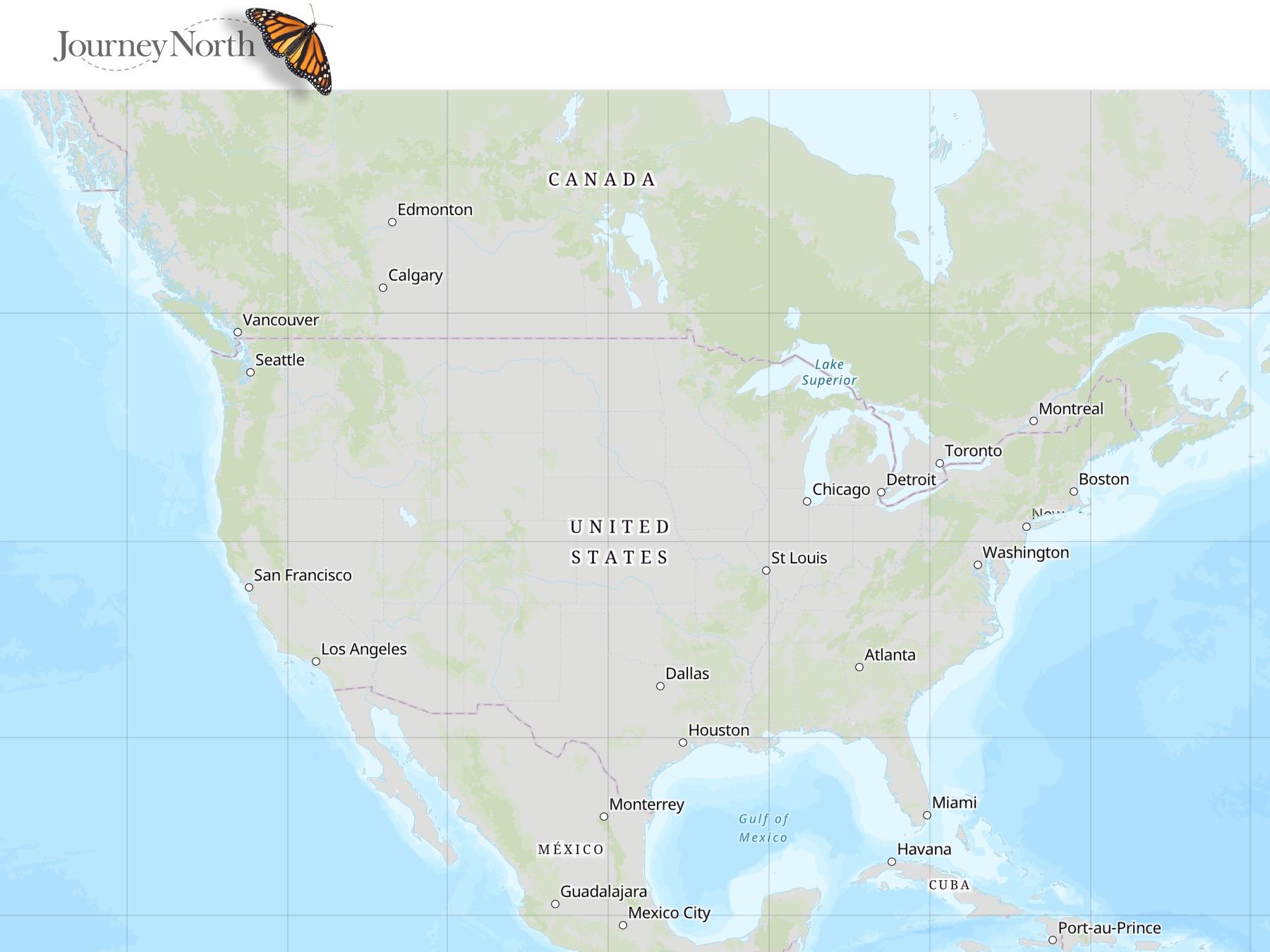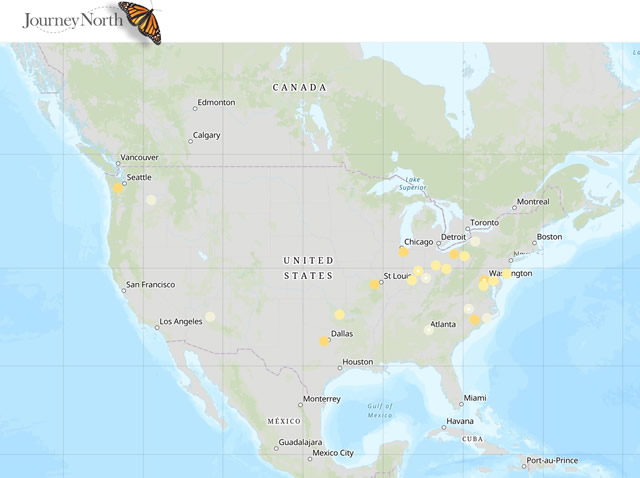Nesting is Underway!
I Am Journey North
Don’t forget to submit your “I am Journey North” selfie! You have plenty of time to submit your photos – this project will run until May 31st. Share what you love about Journey North and the migratory species you help by submitting data, following news updates and/or planting pollinator gardens.
From Owen Sound, ON: Suzanne shared a selfie and said, "I follow Journey North to find out when to expect Spring. It gives me hope. We feed the birds and the bees. Scilla is out now, but no bees yet - it keeps snowing a little bit every day." (04/22/2020)
Go to Let’s Connect to learn more about this project.
Nesting Sightings Picking Up
American Robins are early breeders. Upon returning to their summer range, they are one of the first North American bird species to lay eggs. April marks the beginning of the breeding season, and sightings of nests, eggs, babies and fledglings by Journey North citizen scientists are all on the rise. Baby robins grow quickly! Within 13-15 days, the once-defenseless babies are ready to leave the nest.
From Ann Arbor MI: Olivia said, "I now have a mama and four eggs! I have named her Helen. She has a lot of attitude but is starting to trust that the dog and I won't harm her or her nest." (04/16/2020)
From Evansville IN: Suze shared, “They're growing fast! Mama robin trusts my coming and going. She carries on. Dad, on the other hand, screeches his displeasure.” (04/20/2020)
From Milton, MA: Mary observed, “this robin has built a beautiful nest in our holly tree. There was a nest with 4 eggs in the same location last year, but the eggs disappeared. Yesterday morning there were 2 eggs. We are in for a cold and rainy snap. Hope she will have better luck this year! " (04/26/2020)
Way Up North
American robins are being seen in the northern reaches of their range, not far from the Artic Circle.
From Shageluk, AK: Joyanne noted, “Holy cow! 2-3 weeks early. The earliest before this was 2004, April 13. We still have lots of snow this year, too. A Dark-eyed Junco was also seen today.” (04/11/2020)
Special Sightings
From Maynard, IA: Jill shared, “I believe we have a partial albino robin!” (04/12/2020)
From Altona, MB: Nicole said, “My father and I saw our very first albino robin. We have lots of different pictures of it.” (04/25/2020)
These are unique robins, although they may be leucistic rather than albinistic. What do you think? Take a look at these resources.
- Leucistic robiins
- Robins of a Different Feather: Albinism
- Who is that Masked Robin: Partial Albinism
Leucism is a genetic condition which prevents pigments from reaching some or all of a bird's feathers. Leucistic robins tend to have white splotches on their feathers, but the eyes and skin remain their normal color. Albinism is a genetic condition where melanin – the pigment that gives skin, feathers, and eyes their color – is not produced. Albino individuals are completely white with pink eyes and skin.
Report Your Sightings
Report what American Robin activities your are observing. Nesting behaviors including gathering materials for nests, egg laying, feeding babies; Other behaviors include foraging, mating, splashing in bird baths, and many more. Checklist of Robin Observations
Looking For Fun Activities To Do At Home?
Look no further! Journey North has many resources for anyone with a curious mind. This week we feature resources related to Robin Nests and Eggs. Let’s all explore together.
Are You Seeing Other Birds?
Peak spring migration is occurring or nearing in many parts of the Northern Hemisphere. What species are you seeing?
You can submit your sightings for American Loons, Barn Swallows, Baltimore and Bullock’s Orioles, Red-winged Blackbirds, and other species.
Go to the Journey North sightings page and under the 'Select Species or Event' dropdown menu, select 'Loon', 'Barn Swallow', 'Oriole' or 'Red-Winged Blackbird'. If you are seeing other species not listed, select 'All Other Signs of Spring' under the dropdown menu.


